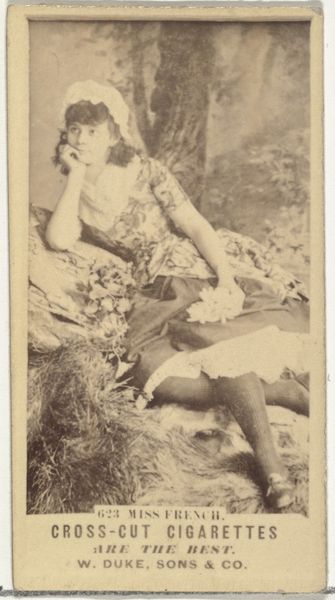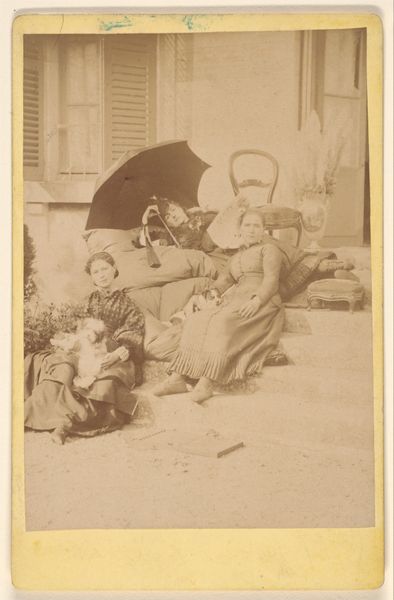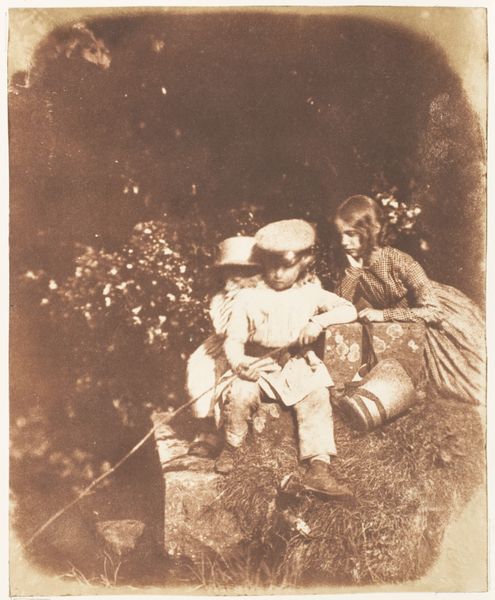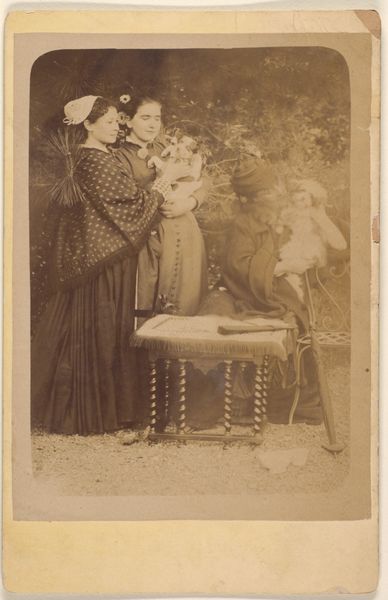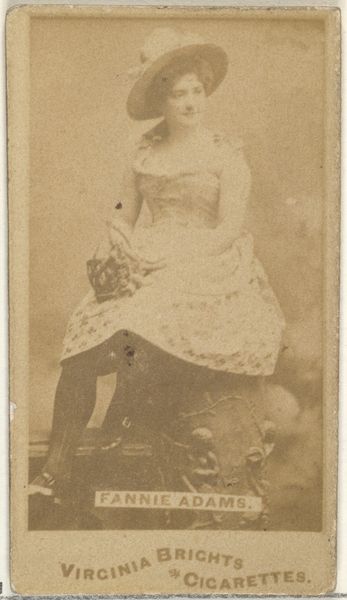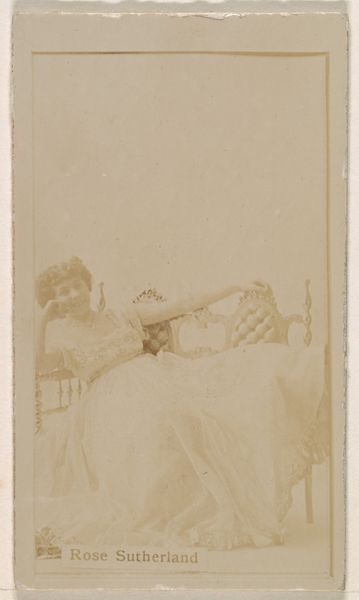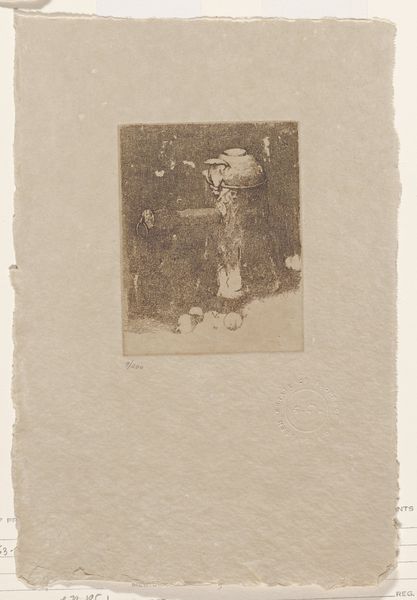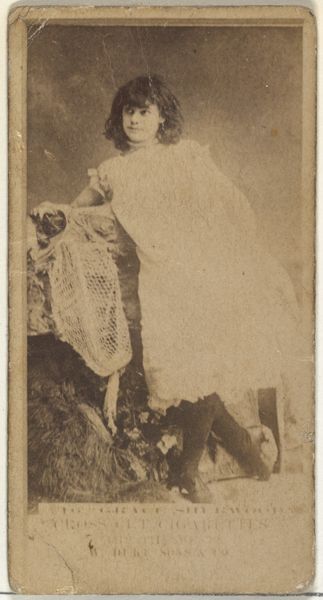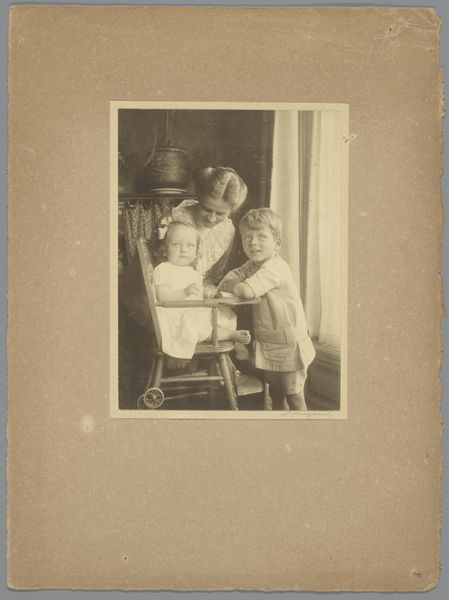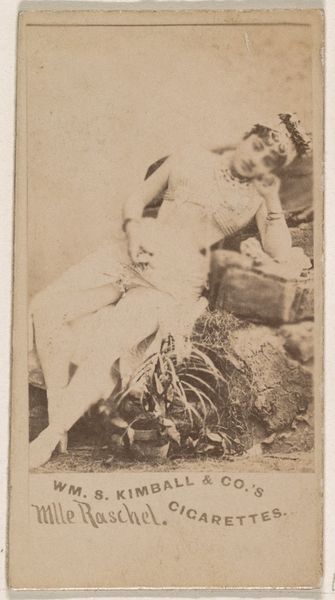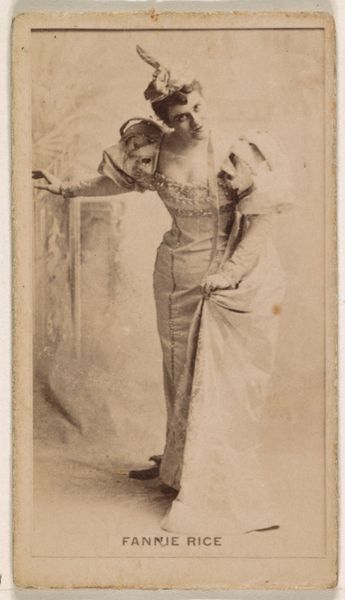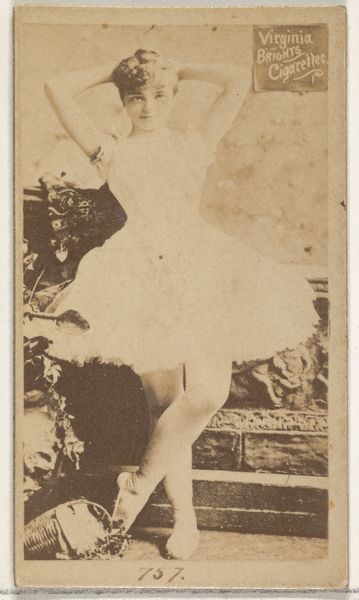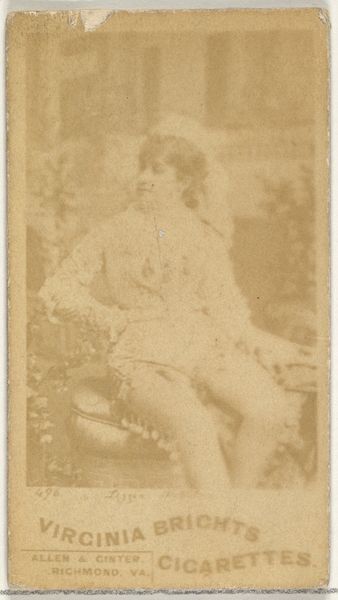
#
photo of handprinted image
#
aged paper
#
toned paper
#
light pencil work
#
water colours
#
pencil sketch
#
dog
#
coloured pencil
#
men
#
watercolour bleed
#
watercolour illustration
#
watercolor
Dimensions: 10.2 x 13.7 cm (4 x 5 3/8 in.)
Copyright: Public Domain
Editor: This intriguing photograph, "Les Chiens" by Pierre-Louis Pierson, dates back to the 1860s. It’s currently housed at The Met. I find the tonal range quite evocative, creating a sense of quiet intimacy despite the somewhat staged composition. What jumps out at you when you view this image? Curator: What strikes me is the inherent theatricality Pierson brings to the photographic medium. In this period, photography was wrestling with its identity – was it simply a documentary tool, or could it aspire to the artistic heights of painting? Pierson, associated with the court of Napoleon III, clearly saw photographic portraits as opportunities for elaborate visual constructions, meticulously staged to project power, wealth and status. The figures, posed with what appear to be prop dogs, the somewhat artificial setting…it all points to a deliberate crafting of image. Consider how this challenges the notion of the camera as merely capturing reality. Editor: So you're saying it's less about capturing reality and more about creating a narrative? Curator: Precisely! And it raises important questions about the public role of art. Who was this image intended for? What message was it designed to convey about the sitter's social standing or taste? How did photographic portraits influence perceptions of identity and authority in the Second Empire? These carefully constructed images participated in a larger visual culture where representations played a significant role in shaping social and political life. Editor: That's a fascinating insight. It reframes my initial perception completely. Curator: Indeed. By examining its historical and cultural context, we can understand how this photograph contributes to our knowledge of 19th-century French society. What do you think you will remember most from this conversation? Editor: The artifice, definitely. The way the photo stages reality to present an idealized image for public consumption. And you? Curator: How easily we can be drawn in by surface appearances and overlook the complex social dynamics at play within even the most seemingly simple photograph.
Comments
No comments
Be the first to comment and join the conversation on the ultimate creative platform.
